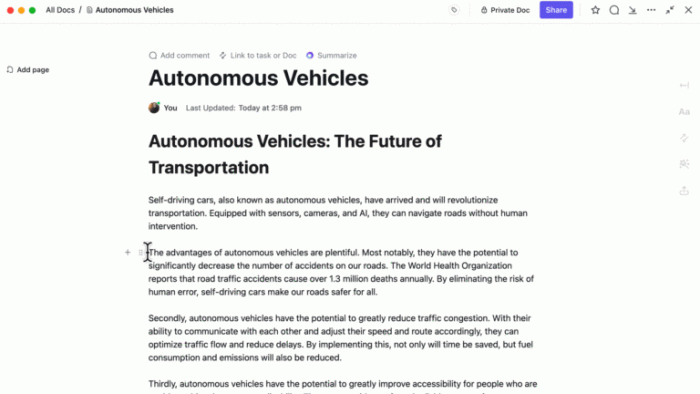
What makes a great manager? This isn’t just about titles and responsibilities; it’s about fostering a thriving team environment. From defining effective leadership to handling crises with grace, this exploration delves into the multifaceted nature of exceptional management. We’ll uncover the key traits, skills, and strategies that set great managers apart, providing actionable insights for anyone looking to excel in their leadership role.
This article will cover defining great management, essential management skills, strategic thinking, employee development, adaptability, leading through challenges, and building relationships. We’ll examine the importance of communication, delegation, motivation, conflict resolution, and decision-making. Each section will explore practical examples and strategies to help you develop these essential leadership skills.
Defining Great Management
Great management transcends the simple act of assigning tasks. It’s about fostering a thriving work environment where individuals feel empowered, valued, and inspired to achieve their best. Effective managers cultivate a culture of collaboration and innovation, leading to both individual and organizational success. They are adept at navigating complex situations, motivating teams, and driving positive change.Effective leadership involves more than just directing; it encompasses inspiring, guiding, and empowering others to achieve shared goals.
Great managers recognize that their success is intrinsically linked to the success of their teams. This understanding motivates them to create opportunities for growth and development, fostering a sense of belonging and shared purpose. The distinction between great and average managers lies not just in their technical skills, but in their ability to build strong relationships, communicate effectively, and cultivate a positive work culture.
Defining Effective Leadership
Effective leadership is characterized by a blend of strategic vision, interpersonal skills, and a deep understanding of human motivation. Leaders are adept at envisioning the future and translating that vision into actionable steps. They inspire and motivate their teams to embrace challenges and achieve ambitious goals. They create a clear path for individuals to contribute meaningfully to the organization’s success, understanding that their roles are integral to the overall strategy.
Great managers, in my opinion, foster open communication and trust. They understand that a strong team relies on everyone feeling heard and valued, especially during times like the “winter of our disconnect,” where feelings of isolation and disconnection can easily impact productivity and morale. This requires empathy and active listening, skills that are just as important as any technical knowledge.
Ultimately, a great manager understands that creating a supportive and connected environment is key to success, no matter the season or circumstances. Check out this insightful piece on the topic: the winter of our disconnect.
Characteristics of Great Managers
Great managers possess a unique set of qualities that distinguish them from their peers. They are adept at delegating effectively, understanding the strengths and weaknesses of their team members, and providing constructive feedback. They actively listen to concerns, address conflicts promptly and fairly, and foster an environment of trust and mutual respect.
Qualities of a Positive Work Environment
A positive work environment is built on mutual respect, open communication, and shared values. Great managers prioritize creating a culture where employees feel comfortable expressing their ideas, seeking help, and taking ownership of their work. This supportive environment encourages creativity, innovation, and a strong sense of team cohesion. It’s an environment where employees feel safe to take risks, learn from mistakes, and contribute to the overall success of the organization.
The Importance of Communication in Effective Management
Clear and consistent communication is the cornerstone of effective management. Great managers are adept at conveying information clearly, actively listening to feedback, and fostering open dialogue. They understand the importance of both formal and informal communication channels, ensuring that everyone is on the same page. They understand that effective communication is not just about transmitting information, but also about understanding and responding to the needs and concerns of their team members.
Traits of Great Managers
| Trait | Description | Example | Impact |
|---|---|---|---|
| Visionary | Articulates a clear and inspiring vision for the team and organization. | Communicates a compelling strategic plan for the department, highlighting how individual contributions fit into the larger picture. | Motivates and aligns team members towards shared goals, fostering a sense of purpose and direction. |
| Empathetic | Understanding and responding to the emotional needs of team members. | Actively listens to concerns, acknowledges feelings, and provides support during challenging times. | Creates a supportive and inclusive environment where team members feel valued and respected. |
| Decisive | Makes timely and informed decisions based on available information. | Quickly assesses situations, weighs options, and implements solutions effectively. | Reduces uncertainty, promotes efficiency, and demonstrates accountability. |
| Delegative | Effectively assigns tasks and responsibilities to team members. | Recognizes the strengths of team members and delegates tasks accordingly, providing necessary support and guidance. | Empowers team members, promotes skill development, and increases overall productivity. |
| Accountable | Takes ownership of decisions and outcomes. | Acknowledges mistakes and takes corrective action, learning from experiences to improve future performance. | Builds trust and fosters a culture of responsibility and continuous improvement. |
Essential Management Skills: What Makes A Great Manager
Effective management isn’t just about knowing the tasks; it’s about fostering a thriving team environment. Strong managers possess a unique blend of interpersonal skills, strategic thinking, and the ability to navigate challenges. This crucial aspect of leadership directly impacts team performance, employee satisfaction, and overall organizational success. The following sections delve into the essential skills required for achieving those outcomes.
Core Management Skills
Successful management hinges on a combination of technical and soft skills. Technical skills, often specific to the industry, include proficiency in relevant software, processes, and industry knowledge. However, soft skills, such as communication, problem-solving, and decision-making, are equally, if not more, important. These soft skills allow managers to connect with team members on a human level, fostering trust and collaboration.
They are the cornerstone of effective communication and inspire positive team dynamics.
Delegation and Empowerment
Effective delegation is a cornerstone of efficient team management. It involves assigning tasks to team members based on their strengths and capabilities, fostering a sense of ownership and responsibility. Delegation doesn’t just reduce workload; it empowers team members, increasing their skill development and job satisfaction. This trust-building process leads to higher performance and a more engaged workforce. Empowerment, an extension of delegation, encourages employees to take initiative and make decisions within their assigned roles.
Great managers inspire trust and empower their teams. They foster a supportive environment where everyone feels valued, which is crucial for any team, especially in today’s rapidly evolving tech landscape. A recent report highlights a critical issue facing the Federal government: a shortage of cybersecurity personnel. This is a major concern, as report feds short on cybersecurity manpower underscores the need for skilled managers who can effectively lead and motivate cybersecurity teams.
Ultimately, great managers, regardless of the industry, are adaptable and capable of inspiring their teams to overcome challenges.
This fosters innovation and a proactive work environment.
Motivating and Inspiring Employees
Motivating employees involves understanding individual needs and motivations. Recognizing achievements and providing constructive feedback are key components of a positive work environment. Positive reinforcement, coupled with clear expectations and opportunities for growth, are crucial in driving employee engagement and productivity. Understanding the unique motivations of each team member is essential to create an environment where they feel valued and appreciated.
Regular check-ins, providing support and guidance, and celebrating milestones are effective strategies.
Conflict Resolution and Handling Disagreements
Disagreements and conflicts are inevitable in any team. A crucial management skill lies in effectively addressing these issues. Constructive communication, active listening, and a focus on finding common ground are essential for resolving conflicts constructively. Mediation and negotiation skills are essential to help team members understand each other’s perspectives and reach a mutually acceptable resolution. By fostering a culture of open communication and respectful dialogue, managers can prevent conflicts from escalating and damaging team dynamics.
Management Styles Comparison
| Management Style | Description | Strengths | Weaknesses |
|---|---|---|---|
| Autocratic | Centralized decision-making, clear directives, and strict adherence to rules. | Fast decision-making, clear expectations, and a structured approach. | Can stifle creativity, demotivate employees, and lead to resentment. |
| Democratic | Collaborative decision-making, involving team members in the process. | Increased employee engagement, diverse perspectives, and buy-in to decisions. | Slower decision-making process, potential for groupthink, and less clear direction. |
| Laissez-faire | Minimal supervision, allowing team members significant autonomy. | Fosters creativity and innovation, promotes self-motivation. | Potential for lack of direction, poor performance if not properly supported, and reduced accountability. |
Active Listening in a Managerial Role
Active listening is a critical skill for managers. It involves fully concentrating on what the speaker is saying, both verbally and nonverbally. This includes paying close attention to their message, asking clarifying questions, and summarizing key points to ensure comprehension. It goes beyond just hearing; it involves understanding and responding empathetically. This fosters trust and strengthens communication, leading to a more productive and collaborative work environment.
A manager who listens actively builds rapport, gains valuable insights, and resolves issues more effectively.
Strategic Thinking and Decision-Making

Strategic thinking is the cornerstone of effective management. It’s not just about reacting to immediate problems; it’s about proactively shaping the future of a team or organization. A manager who can anticipate trends, adapt to change, and make sound decisions based on a clear vision sets the stage for long-term success. This involves not only understanding the current landscape but also envisioning potential opportunities and challenges down the road.Effective strategic thinking and decision-making are intertwined.
They require a deep understanding of the organization’s goals, the competitive environment, and the resources available. Without this foundation, even the most well-intentioned plans can fall short. This process goes beyond simple problem-solving; it’s about anticipating future needs, making calculated risks, and ultimately, steering the team towards a desired outcome.
The Role of Strategic Planning in Managerial Success
Strategic planning is the process of defining the organization’s long-term goals and objectives and outlining the steps needed to achieve them. It provides a roadmap for navigating the future, allowing managers to allocate resources effectively, prioritize tasks, and align individual efforts with overall organizational goals. Successful strategic planning involves a thorough analysis of the internal and external environments, identifying strengths, weaknesses, opportunities, and threats (SWOT analysis).
Methods for Analyzing Problems and Identifying Solutions
A structured approach to problem analysis is crucial. This often involves breaking down complex issues into smaller, manageable components. Techniques such as root cause analysis, brainstorming, and the 5 Whys can be employed to delve into the core of the problem. The goal is to identify the underlying factors driving the issue, not just the symptoms. This deeper understanding allows for the development of more effective and sustainable solutions.
Effective Techniques for Making Timely and Well-Informed Decisions
Making timely and well-informed decisions is a key managerial skill. This involves gathering relevant information, considering various perspectives, and evaluating potential consequences. Using data-driven insights, evaluating different options, and understanding the potential impact of each choice are vital components of effective decision-making. Consideration of ethical implications is also crucial.
Anticipating and Adapting to Changing Circumstances
The ability to anticipate and adapt to changing circumstances is essential for long-term success. This requires a keen awareness of industry trends, market fluctuations, and technological advancements. Regularly monitoring the environment, seeking out new information, and remaining flexible are key components of this adaptability. Effective managers must be willing to adjust their strategies as needed to stay ahead of the curve.
Comparing Different Decision-Making Models and Their Strengths and Weaknesses
Various decision-making models exist, each with its own strengths and weaknesses. The rational model, for example, emphasizes careful analysis and logical choices, while the intuitive model relies on experience and gut feeling. The use of a specific model will depend on the situation and available information. Understanding the strengths and weaknesses of each model allows managers to choose the most appropriate approach for the task at hand.
Creating and Implementing a Clear Vision for the Team
A clear vision for the team is essential for motivating individuals and driving collective action. This vision should be inspiring, achievable, and clearly communicated. It should provide a shared understanding of the team’s purpose and direction. Communicating this vision effectively is critical, ensuring that all team members understand how their individual contributions fit into the larger picture.
This shared understanding is vital for effective team performance.
Employee Development and Growth
Investing in employee development is crucial for both individual and organizational success. A well-developed team is a highly engaged and productive team. Empowering employees to reach their full potential fosters a culture of continuous learning and improvement, leading to innovation and sustained growth. Managers who prioritize employee development demonstrate a commitment to their team’s success and create a positive work environment.
Identifying and Nurturing Employee Potential
Identifying and nurturing employee potential requires a proactive approach. Managers should actively observe employees’ strengths, weaknesses, and interests to determine areas for growth. Regular performance reviews and one-on-one meetings provide valuable opportunities to understand individual aspirations and tailor development plans accordingly. Using assessments and 360-degree feedback can offer deeper insights into employees’ capabilities and areas needing attention. Identifying employees with a strong desire for learning and growth is a significant step in building a high-performing team.
Effective Mentorship and Coaching Programs
Mentorship and coaching programs are effective tools for guiding employees’ professional development. Mentorship involves pairing experienced employees with those needing guidance, fostering knowledge sharing and providing a supportive network. Coaching focuses on providing targeted support and guidance to enhance specific skills or address performance challenges. A structured mentorship program can include regular meetings, shared projects, and knowledge transfer sessions.
Effective coaching involves active listening, constructive feedback, and goal setting to help employees reach their full potential. A coaching program should be tailored to individual needs and goals, and the manager should act as a facilitator and support system.
Importance of Performance Feedback and Improvement Plans
Performance feedback is essential for employee development. Regular, constructive feedback helps employees understand their strengths and areas for improvement. The feedback should be specific, actionable, and focused on both strengths and weaknesses. Improvement plans should be collaboratively developed between the manager and employee. These plans should Artikel specific goals, timelines, and support systems to ensure successful implementation.
This approach empowers employees to take ownership of their development and fosters a culture of continuous improvement.
Fostering a Learning Environment
Creating a learning environment encourages continuous growth. Managers can provide opportunities for training and development, such as workshops, seminars, or online courses. Utilizing internal knowledge sharing platforms and encouraging cross-functional collaboration also facilitates knowledge transfer and fosters a collaborative learning culture. Providing access to industry-relevant resources, like articles and conferences, is crucial for continuous professional development. The organization should invest in learning and development opportunities, demonstrating a commitment to their team’s growth.
Encouraging Creativity and Innovation Within a Team
Encouraging creativity and innovation within a team requires fostering a safe space for experimentation and risk-taking. Managers should actively solicit ideas and feedback from team members. Regular brainstorming sessions, design thinking workshops, and other creative problem-solving techniques can spark innovation. A culture of psychological safety, where employees feel comfortable sharing their ideas without fear of judgment, is crucial.
Managers should reward and celebrate innovative ideas, creating a positive feedback loop for creative endeavors.
Actionable Steps for Managers
- Regular Performance Reviews: Conduct regular performance reviews to identify strengths and areas for improvement.
- One-on-One Meetings: Schedule regular one-on-one meetings to discuss individual goals and provide support.
- Mentorship Programs: Implement a mentorship program to pair experienced employees with those needing guidance.
- Feedback Mechanisms: Establish clear feedback mechanisms for both positive and constructive criticism.
- Development Opportunities: Provide access to training, workshops, and online courses.
- Collaborative Problem Solving: Encourage team members to collaborate and share ideas.
- Rewarding Innovation: Implement a system for recognizing and rewarding innovative ideas.
- Open Communication: Foster open communication channels for employees to share concerns and ideas.
- Learning Culture: Establish a culture that values learning and growth.
Adaptability and Resilience

A great manager isn’t just someone who can execute a plan flawlessly; they’re also the one who can pivot, adjust, and keep their team moving forward when the unexpected happens. Adaptability and resilience are crucial for navigating the ever-changing landscape of the modern workplace. They allow managers to not only weather storms but also to transform challenges into opportunities for growth and innovation.
The ability to remain composed under pressure and inspire confidence in others is a hallmark of exceptional leadership.Effective management in today’s dynamic environment demands a profound understanding of how to adapt to change and unexpected situations. This involves anticipating potential disruptions, developing contingency plans, and fostering a culture of flexibility within the team. By embracing change as an opportunity rather than a threat, managers can lead their teams to greater success.
Adapting to Change and Unexpected Situations
Successfully navigating unforeseen circumstances requires proactive planning and a willingness to adjust course. Managers should anticipate potential disruptions and develop contingency plans that address various scenarios. This involves regularly reviewing and updating strategies to ensure they remain relevant and effective in the face of evolving circumstances. For instance, a sudden market shift might necessitate a rapid re-evaluation of marketing strategies, or a key employee leaving unexpectedly might demand immediate action to fill the gap.
These kinds of situations necessitate swift and decisive action, but also a level-headed approach to maintaining composure.
Navigating Challenging Circumstances and Maintaining Composure
Maintaining composure under pressure is essential for effective leadership. Techniques like deep breathing exercises, mindfulness, and focusing on solutions rather than problems can help. Managers who model calmness and composure during challenging times inspire confidence and trust within their teams. When facing criticism or conflict, a calm and measured response can de-escalate tension and facilitate productive dialogue.
Learning from Setbacks and Mistakes
Mistakes are inevitable in any environment, and great managers recognize them as valuable learning opportunities. Creating a safe space for employees to share their mistakes and learn from them is crucial for fostering a growth mindset. Post-mortem analyses of failed projects can identify areas for improvement and prevent similar issues in the future. A culture of learning from failures can drive continuous improvement and strengthen the team.
This approach empowers employees to take calculated risks, knowing that the organization values learning from mistakes.
Fostering Resilience in the Workplace
Resilience isn’t just an individual trait; it’s a collective strength that can be cultivated within a team. Managers can foster resilience by promoting open communication, providing support systems, and recognizing and celebrating successes. Creating a supportive team environment where employees feel valued and empowered is key. Team-building exercises and initiatives that emphasize collaboration and mutual support can help develop a sense of shared responsibility and a collective ability to overcome obstacles.
The Role of Emotional Intelligence in Handling Difficult Situations
Emotional intelligence (EQ) is critical for navigating challenging situations. Managers with high EQ can recognize and manage their own emotions, understand the emotions of others, and respond effectively to challenging situations. They can empathize with team members facing difficulties and provide appropriate support. This involves actively listening, showing genuine concern, and responding with understanding and compassion, even when facing conflict or disagreement.
Leaders with high EQ can foster a more positive and productive work environment.
Building a Strong and Supportive Team Culture
A strong and supportive team culture is essential for adaptability and resilience. Open communication channels, trust, and mutual respect are vital components. Regular team meetings, feedback sessions, and social events can foster stronger bonds. Establishing clear expectations, transparent decision-making processes, and a culture of shared responsibility creates a sense of ownership and engagement among team members. When faced with change, a strong team culture can act as a buffer, providing support and a sense of collective purpose.
Great managers foster a positive work environment, empowering their teams. Thinking about how North Korea’s recent expansion of 3G coverage to outsiders only ( north korea widens 3g coverage for outsiders only ) highlights the need for clear communication and accessible resources, mirroring the importance of open communication in a successful team. Ultimately, a great manager anticipates needs and creates opportunities for growth, just like a forward-thinking leader in any sector.
This culture of trust and understanding enables the team to navigate uncertainties and emerge stronger.
Leading Through Challenges
Navigating unexpected problems and crises effectively is a crucial aspect of great management. Leaders must not only maintain composure but also inspire their teams to overcome adversity. This requires a multifaceted approach that combines proactive planning, clear communication, and unwavering support. A strong leader fosters trust and transparency, enabling the team to face challenges with confidence and resilience.
Handling Crises and Unexpected Problems Effectively
Effective crisis management hinges on a structured approach. This involves anticipating potential problems, developing contingency plans, and practicing these plans regularly. A proactive leader establishes clear communication channels and protocols to ensure swift and informed decision-making during unforeseen events. Proactive risk assessment and mitigation strategies are vital for minimizing the impact of crises and enabling a smoother recovery.
Motivating Teams During Difficult Times
Maintaining team morale during challenging periods is paramount. Leaders who demonstrate resilience and optimism inspire their teams to persevere. Empathy, active listening, and open communication are essential to understanding and addressing team concerns. Recognizing and rewarding individual and team accomplishments, no matter how small, can boost morale and foster a sense of collective purpose.
Importance of Clear and Consistent Communication During a Crisis
Clear and consistent communication is critical during a crisis. Leaders must provide accurate, timely information to all stakeholders, ensuring everyone is on the same page. This includes not only informing employees about the situation but also addressing their concerns and anxieties. Using various communication channels, like emails, team meetings, and instant messaging, can ensure broad and rapid dissemination of information.
Maintaining Trust and Transparency
Trust and transparency are cornerstones of effective leadership during challenging times. Leaders who maintain honesty and openness, even when facing difficult decisions, build trust within their teams. Openly acknowledging uncertainties and actively seeking feedback fosters a sense of shared responsibility and encourages collaboration in problem-solving.
Examples of How Great Managers Have Overcome Obstacles
Throughout history, numerous managers have demonstrated exceptional leadership in the face of adversity. For example, during the COVID-19 pandemic, many leaders successfully transitioned their teams to remote work, implementing new technologies and communication strategies. These leaders prioritized employee well-being, ensuring their teams felt supported and equipped to navigate the unprecedented circumstances.
Table: Challenges, Managerial Responses, and Outcomes, What makes a great manager
| Challenge | Managerial Response | Outcome |
|---|---|---|
| Sudden loss of a key client | Implemented a swift restructuring plan, proactively identified alternative clients, and offered training to staff to adapt to new procedures. | Successfully secured new clients, maintaining profitability and job security for staff. |
| Natural disaster disrupting operations | Developed a comprehensive contingency plan, established clear communication channels, and ensured the safety and well-being of all employees. | Minimized operational disruptions, maintained employee morale, and facilitated a swift recovery. |
| Significant downturn in market demand | Implemented cost-cutting measures while prioritizing employee retention, offered training and support to staff to adapt to new processes, and communicated transparently with stakeholders. | Successfully navigated the downturn, maintained profitability, and retained key talent. |
Building Relationships and Trust
Building strong relationships with employees is fundamental to a successful and thriving workplace. It goes beyond simply managing tasks and responsibilities; it involves understanding individual needs, fostering open communication, and cultivating a sense of belonging. Trust is the bedrock upon which these relationships are built, influencing everything from motivation and productivity to job satisfaction and retention. A manager who prioritizes building relationships and trust creates a positive and collaborative work environment that benefits both the team and the organization.Strong relationships are built on a foundation of mutual respect and understanding.
This goes beyond simply being friendly; it’s about actively listening to employees, valuing their perspectives, and acknowledging their contributions. It involves understanding individual working styles and creating a supportive environment where employees feel comfortable expressing their ideas and concerns. This proactive approach to relationship building is key to navigating challenges and fostering innovation.
Methods for Building Strong Relationships
Developing strong relationships with employees requires a conscious and consistent effort. Active listening is crucial, and involves more than just hearing words; it encompasses understanding the underlying emotions and concerns. Empathy, the ability to understand and share the feelings of another, is essential for building rapport. By demonstrating empathy, managers show employees that they value their perspectives and experiences.
This can be achieved by acknowledging employee contributions, actively seeking their input, and genuinely caring about their well-being.
- Open Communication Channels: Establishing clear and consistent communication channels, such as regular one-on-one meetings, team discussions, and feedback mechanisms, creates opportunities for employees to share their thoughts and concerns. This fosters a sense of transparency and allows for the timely resolution of issues. Regular updates and open dialogue build trust and make employees feel valued.
- Active Listening and Responding: Actively listening to employee concerns, acknowledging their feelings, and responding thoughtfully and constructively, demonstrates a genuine interest in their well-being. This involves paraphrasing what they say to confirm understanding, asking clarifying questions, and providing appropriate feedback or solutions.
- Celebrating Successes: Acknowledging and celebrating employee achievements, both big and small, fosters a positive and motivating work environment. Recognizing contributions publicly and privately helps build morale and reinforces the importance of their efforts.
Importance of Empathy and Understanding
Empathy is vital in the workplace because it allows managers to connect with their employees on a deeper level. Understanding individual perspectives, concerns, and motivations helps in tailoring communication styles and management approaches to maximize employee engagement and satisfaction. This leads to more effective problem-solving and improved collaboration.
Examples of Active Listening and Responding
A manager who actively listens and responds to employee concerns demonstrates genuine care and fosters trust. For instance, if an employee expresses frustration with a specific task, a manager could respond by saying, “I understand your frustration with the current workflow. Let’s discuss alternative approaches and see if we can streamline the process.” This demonstrates empathy and a willingness to collaborate on finding solutions.
Building Trust and Respect
Building trust and respect within a team is a gradual process. Transparency, consistency, and fairness in decision-making play a vital role. Openly communicating the reasons behind decisions and actions fosters a sense of understanding and shared purpose. This, in turn, increases the likelihood that employees will trust and respect the manager’s judgment. Actively soliciting employee feedback and incorporating it into decisions demonstrates that their opinions are valued.
Role of Open Communication in Fostering Trust
Open communication is the cornerstone of trust. It involves actively seeking input from employees, sharing information openly and honestly, and creating a safe space for feedback. This two-way exchange of information fosters a sense of psychological safety, where employees feel comfortable expressing their thoughts and concerns without fear of judgment or reprisal.
Creating a Supportive and Inclusive Work Environment
A supportive and inclusive work environment values diversity and fosters a sense of belonging for all employees. This includes actively promoting inclusivity, respecting different perspectives, and ensuring that all employees feel valued and respected. Celebrating diversity of thought and experience enriches the workplace and leads to more creative problem-solving.
Ending Remarks
In conclusion, great management isn’t a fixed set of rules, but a dynamic blend of skills and traits. From defining clear expectations to fostering a supportive environment, a great manager empowers their team to reach their full potential. By mastering communication, adaptability, and strategic thinking, you can create a high-performing team capable of navigating challenges and achieving exceptional results.
This guide provides a roadmap for cultivating the qualities of a truly great manager.






